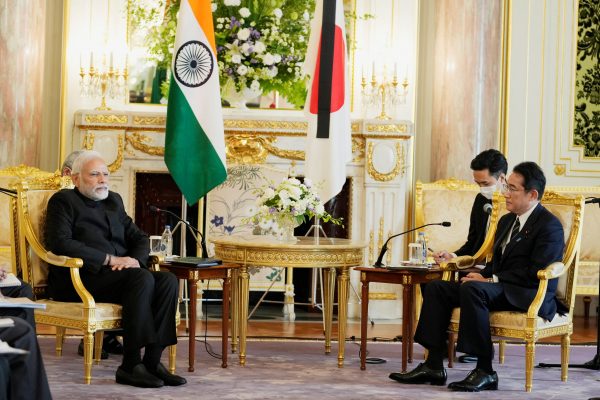Former Japanese prime minister Shinzo Abe’s initial vision for the Free and Open Indo-Pacific encompassed the incorporation of Central Asia but this component has not gained much traction. In 2015, Abe visited all five Central Asian republics in a single trip, underlining his commitment to the continental aspect of Japan’s Asia strategy.
Through his visit, Abe renewed former prime minister Ryutaro Hashimoto’s ‘Eurasian diplomacy’ policy of the 1990s, which aimed for Japan to expand its strategic influence in Central Asia. Given current Japanese Prime Minister Fumio Kishida’s efforts to win friends in the global south, developing a continental component of the Free and Open Indo-Pacific is crucial.
Central Asia has traditionally been within Russia’s sphere of influence, but China’s increasing demand for resources has led to increased competition. With Moscow preoccupied with its invasion of Ukraine, China has been steadily expanding its regional security footprint.
The ongoing crisis in Ukraine has deepened Russia’s political and economic dependence on China. Beijing is buying Russian energy and supplying goods and materials such as electronics, machinery, and aircraft to Moscow. China’s renminbi also provides an alternative to the US dollar. Politically, Chinese President Xi Jinping has backed Moscow and blamed the war in Ukraine on NATO’s eastward expansion.
Meanwhile, Central Asian countries are also growing distrustful of Russia following its invasion of Ukraine. Previously, Central Asian countries could play Russia and China against each other, increasing their own influence. But the situation has changed. Being positioned between China and Russia fundamentally constrains the manoeuvrability of the Central Asian republics, which are now seeking new partnerships to balance the increasingly close relationship between Moscow and Beijing.
This is where the Central Asian countries’ search for new partners like India and Japan is crucial to balance against China and Russia. It would help the Central Asian countries escape the limitations of geography and expand their engagement past their immediate neighbourhood. Partnering with Japan and India would bring economic rewards and enable Central Asian countries to act more independently of China and Russia.
India and Japan could begin by focussing on joint public and private sector development initiatives. Providing economic alternatives could help Central Asian countries hedge against China’s growing influence. This approach would fit the framework of Japan’s economic diplomacy and renewed support for the developing world and complements India’s outreach to the global south under its G20 presidency. Central Asian countries like Kazakhstan, Turkmenistan and Uzbekistan also want to diversify their economies away from energy revenue, making technological and economic cooperation with India and Japan an attractive prospect.
New Delhi and Tokyo share many similar aims in their bilateral initiatives with Central Asian countries. The task lies in operationalising these shared interests. Since 2004, Japan has maintained its Central Asia plus Japan Dialogue at the foreign ministerial level. Tokyo also has a longstanding policy of ‘Silk Road Diplomacy’, which encompasses economic aid, assistance and substantial investment in the region.
India engages Central Asia through its Extended Neighbourhood Policy. In 2022, Indian Prime Minister Narendra Modi convened the India–Central Asia Summit with his counterparts from Kazakhstan, Kyrgyzstan, Tajikistan, Turkmenistan and Uzbekistan.
A starting point for India and Japan could be joint investments in the energy sector, including natural gas, oil, uranium and rare earth minerals. Given the ongoing debates on reliable and resilient supply chains, both India and Japan stand to benefit from such projects. New Delhi should follow Tokyo’s lead in promoting greater Central Asian regional integration — supporting Central Asia’s development and reducing its dependence on Russia and China.
The alignment of India’s security and Japan’s economic aims mean that the two countries are well positioned to increased engagement with Central Asia. A shared India–Japan outlook for Central Asia would provide solid ground for Central Asian countries to pursue a diversified and balanced strategic policy.
Ved Shinde is a Research Intern at the Asia Society Policy Institute, New Delhi and student at St Stephens College, the University of Delhi.

